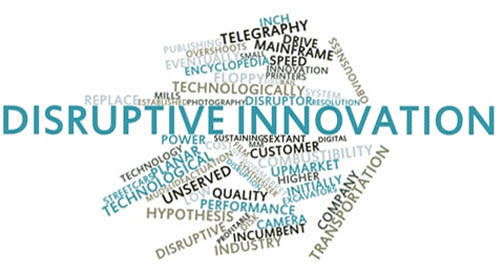Healthcare
The Top 5 Disruptive Technologies of 2014

An Investor’s Guide to Disruptive Innovation
In this article, Jason Stutman talks about the 5 most disruptive technologies of last year and touches on some of the industries that they will disrupt. Some of which we have discussed in class. He lists that Additive Manufacturing, The Automated World, The Internet of Things, Next Generation Interface, and Next Generation Genomics are the five most disruptive technologies. Additive Manufacturing is the process of buiilding three-dimensional objects with machines using CAD software (3D Printing). This is disrupting manufacturing as a whole because it can literally make anything and results in less waste, faster output, and lower operational costs. Automated World is what its title suggests, automation. This technology could disrupt the job market and affect areas such as automated retail, advanced robotics, and artificial intelligence. The Internet of Things is the concept of everyday objects becoming connected to the web. This disruptive technology is directly tied to the automated world. Next Generation Interface refers to the fact that our devices become smaller and smaller that we will need a new means on interaction with them. Lastly, Next Generation Genomics refers to treatment based on genetic sequencing rather than symptoms. All of these are disruptive based on facts sited in the article. What technologies will be considered the most disruptive for 2015?
Using Disruptive Innovation for Social Change
This article talks about how Mark W. Johnson (Clayton Christensen’s business partner) says that disruptive innovation is not about being better than what currently exists. He says disruptive innovation “transforms a complicated, expensive product into one that is easier to use or is more affordable than the one most readily available.You know an innovation is disruptive when a new population has access to products and services that previously were only affordable for the few or the wealthy.”
A subset of disruptive innovations called catalytic innovations is introduced and described as “providing good-enough solutions to inadequately addressed social problems.” An example would be the MinuteClinic which provides affordable walk-in health services for common health problems. The idea of the MinuteClinic lead to the creation of other walk-in clinics that serve people who cannot afford health care.
As business students we usually focus on the profits to be earned from a new idea or technology, but I think it’s interesting to look at the social changes we can achieve. What other examples can you think of where disruptive innovation was used for social causes? How do you think disruptive innovation can be used for social change in the future?
Apple HealthKit
I was doing some research on healthcare management and found this article on Apple’s HealthKit application. This application allows patients to input personal data, such as weight, blood glucose, heart rate and blood pressure. This information is transmitted through the cloud to healthcare providers. This can then be utilized to catch early indicators of disease and allow healthcare providers to treat an issue before it becomes more serious. This will ultimately lead to improved survival rates. Other areas of the medical industry utilizing this type of technology include assisted living, home monitoring, and clinical trials. One of the problems with this type of technology is data security. Because it uses cloud storage to improve its connectivity and data sharing, there is a serious threat to theft and data manipulation.
Personally I find this interesting because of the benefits this could provide. Over time, this data can be used to establish trends which would allow health professionals to determine what activities/actions lead to certain health outcomes. I also think it could allow for better health insurance pricing. For example, if you had two people on diabetes management plans, health insurance providers could see which customers are following their health plan and which ones aren’t. The idea here being that people who are compliant with their health plans will use fewer medical services, leading to a reduction in spending on medical services. Health insurance providers could then adjust payments based on health plan compliance.
Outside of benefits mentioned in the article, what benefits do you see from using Apple’s HealthKit? Is there any technology that could be used in conjunction with this? Do you have any suggestions for solving this data security problem? Do you see any other threats to healthcare data security as a result of cloud storage?



